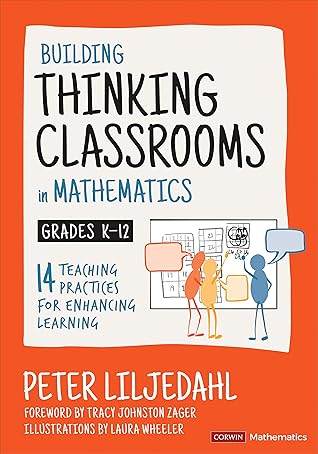More on this book
Community
Kindle Notes & Highlights
Read between
November 15, 2020 - March 7, 2021
you are grappling with the inherent flaws within the point gathering paradigm.
These scores are subjective. Objectivity is a myth. Yet, the myth endures.
the tyranny of objectivity,
the data-gathering paradigm.
Her success as a learner, and your success as a teacher, should be recognized in her grade.
she shouldn’t be punished for her early-not-knowing.
The tyranny of objectivity that comes from point gathering ignores the very human elements of grading that are clearly evident in Ben
and Charlie’s cases.
We need to let the data talk to us, rather than allowing ...
This highlight has been truncated due to consecutive passage length restrictions.
outcomes-based or standards-based assessment, or evidence-based grading,
How do we know where students are
in their learning?
instrument that delineates the learning outcomes and differentiates between the complexity levels of any given task
✓ is used when knowledge has been demonstrated individually
It turned out that tipping point is two consecutive demonstrations of attainment.
The reorganization of points into data allowed the teachers to let go of outliers and early-not-knowing.
The point-gathering system repeatedly punishes Jennifer for not being able to do things she just cannot yet do.
The data-gathering system ignores these.
This is time intensive. But she does not need to do this for all her students.
A data-gathering approach coupled with the instruments presented in this chapter allows for this.
when students know as much as you do about where they are and where they are going, an interesting thing begins to happen—they start thinking about their learning rather than their grades and, as they do so, grading becomes a byproduct of learning rather than the objective of learning.
Adherence to event-based grading, if anything, is a form of grade deflation.
Knowledge, application, and thinking—like basic, intermediate, and advanced—are backward compatible.
Any time you have three complexity levels that are backward compatible, then you can apply the data-gathering system as it is presented in this chapter.
But I caution against blindly privileging some data over others across all students.
In a data-gathering paradigm you collect fewer data and use only the data you need to fill in missing information for the grade.
As mentioned, a test is no longer an aggregated event, but a convenient venue for gathering data on a variety of outcomes at a variety of complexity levels.
As mentioned, a test is no longer an event. Rather, it is a collection of opportunities for students to evidence their learning.
I call this contradictory jurisdictional mandate the two-headed monster, and it extends to all sorts of internal contradictions that exist within
educational systems.
Triangulating data means that we are gathering data from multiple sources in order to seek correspondence within the data.
Correspondence indicates that you are getting close to the truth about what a student has learned.
Portfolios come out of the data-gathering paradigm, and they are just a place where students place evidence of what they understand and are able to do.
Digital
portfolio tools such as FreshGrade or SeeSaw are built specifically to help you and your students gather evidence ...
This highlight has been truncated due to consecutive passage length restrictions.
On the other hand, students who were motivated to learn acted on that motivation at all times—their actions were continuous.
So, you can say that you are not doing a retest, just an additional test.
We accepted the idea of differentiated instruction a long time ago because we recognized that all students are different. If this is true, then we must also accept the idea of differentiated assessment.
We know, for example, that test papers graded early on are often graded differently than ones that are graded near the end.
If nothing else in our practice changes, then thinking tasks will just frustrate the students
and aggravate the teacher.
We have to also create a culture where thinking is not only valued but also necessitated—we have t...
This highlight has been truncated due to consecutive passage length restrictions.
But, you have to start somewhere. And, in this regard, where you start and what you do next turns out to matter. That is what this chapter is about—where to start and what to do next.
the 14 practices cluster into four distinct groupings, or what I call toolkits—and the order in which these toolkits are implemented turns out to
matter.
the practices in the first toolkit—use thinking tasks (Chapter 1), frequently form visibly random groups (Chapter 2), and use vertical non-permanent surfaces (Chapt...
This highlight has been truncated due to consecutive passage length restrictions.
your classroom and working well before you move on to t...
This highlight has been truncated due to consecutive passage length restrictions.
the framework is sequential. The data also showed that within each toolkit, o...
This highlight has been truncated due to consecutive passage length restrictions.
For the first toolkit, all three practices need to be implemented simultaneously, rather than sequentially.
For the second toolkit there is no optimal


